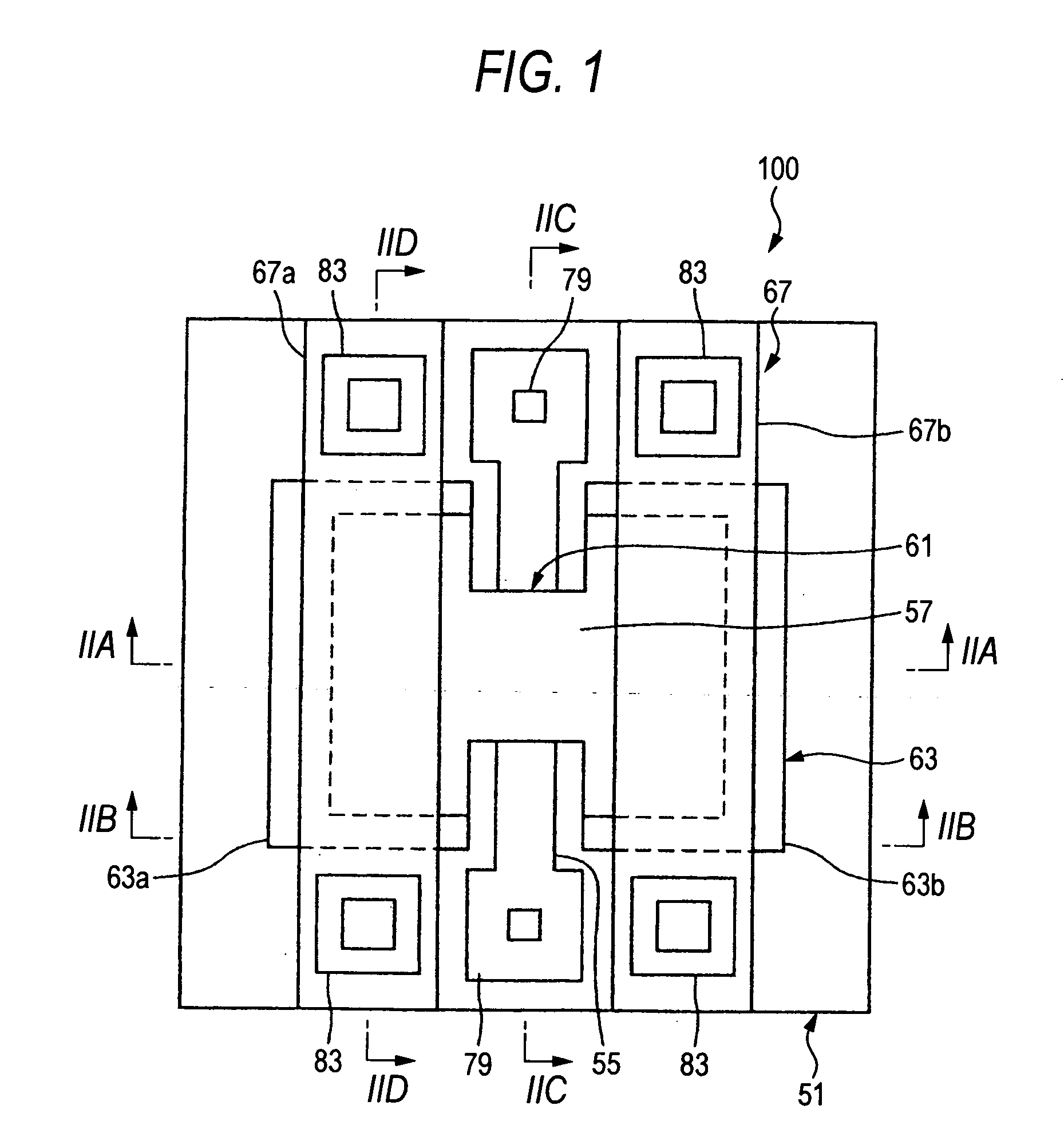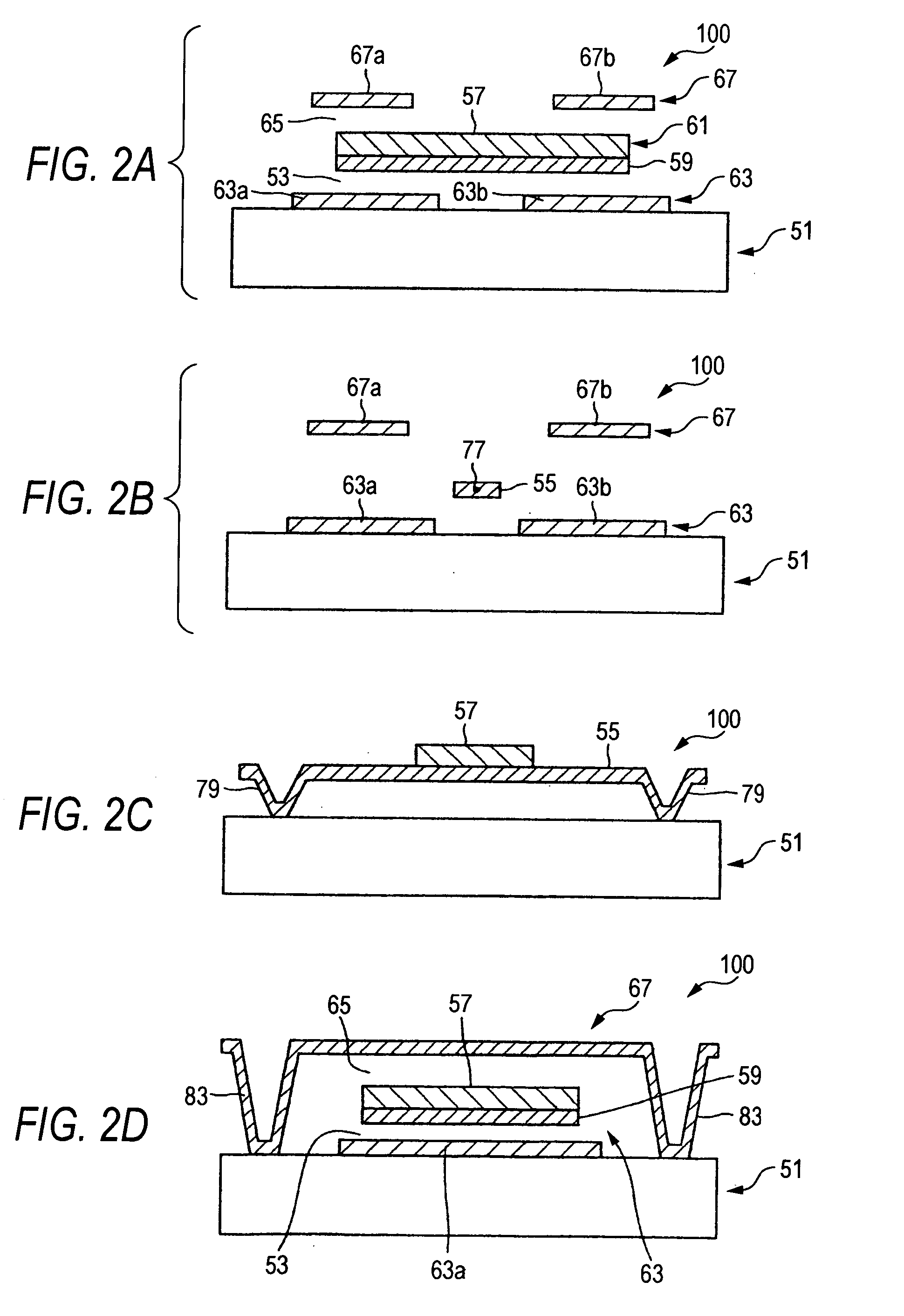Reflection-type light modulating array element and exposure apparatus
a light modulating array and array element technology, applied in the field of reflection-type light modulating array element and exposure apparatus, can solve the problems of increased moment of inertia, limited high-speed movement, large mass of the entire movable part, etc., and achieve the effect of enhancing light utility efficiency, small mass and reducing moment of inertia
- Summary
- Abstract
- Description
- Claims
- Application Information
AI Technical Summary
Benefits of technology
Problems solved by technology
Method used
Image
Examples
modification example 1
[0141]FIG. 15 is an enlarged view of the main part of Modification Example 1 where prisms are provided on the microlens array of FIG. 14.
[0142] In this Modification Example, prisms 161 are arrayed to correspond to respective microlenses 115 in the microlens array 113 of the reflection-type light modulating array element 300 in which the light source•SLM unit 129 is provided. The prism 161 ejects the light transmitted through the microlens 115, to the mirror part 57 at a predetermined angle of refraction. The light injected into the mirror part 57 at this angle of refraction is, when the mirror part 67 is at the OFF tilt position, reflected toward the direction different from the injection direction and when the mirror part 57 is at the ON tilt position, reflected to the same direction as the injection direction.
[0143] According to this Modification Example, a prism 161 is provided, so that in the state where the mirror part 57 and the microlens 115 are opposedly disposed, the inci...
modification example 2
[0144]FIG. 16 is an enlarged view of the main point of Modification Example 2 where the incident light to the microlens array is tilted.
[0145] In this Modification Example, the polarizing beam splitter 163 has a polarization splitting surface 163a of reflecting the incident light from the light source at an angle except for right angle. The angle α of the polarization splitting surface 163a is freely set according to the positions of microlenses 115 and reflection-type light modulating elements 100.
[0146] According to this Modification Example, when the angle α of the polarization splitting surface 163a is set to 45° or more, the reflection angle on the polarization splitting surface 163a becomes an obtuse angle and the thickness T of the polarizing beam splitter 163 can be decreased. Also, when the angle α of the polarization splitting surface 163a is set to form an incident light path and a reflected light path on adjacent two microlenses 115 and 115, similarly to Modification E...
modification example 3
[0147]FIG. 17 is a constitutional view of Modification Example 3 where a microlens array is provided on the light ejection side of the beam splitter.
[0148] In this Modification Example, a third lens array plate 165 is provided on the surface of the polarizing beam splitter 141 on the exposure light ejection side. The third lens array plate 165 converges each light flux reflected from the mirror part 57 and transmitted through the polarizing beam splitter 141.
[0149] According to this Modification Example, the exposure object 121 can be exposed directly by the modulated light and therefore, an optical system close to contact exposure can be constituted.
PUM
 Login to View More
Login to View More Abstract
Description
Claims
Application Information
 Login to View More
Login to View More - R&D
- Intellectual Property
- Life Sciences
- Materials
- Tech Scout
- Unparalleled Data Quality
- Higher Quality Content
- 60% Fewer Hallucinations
Browse by: Latest US Patents, China's latest patents, Technical Efficacy Thesaurus, Application Domain, Technology Topic, Popular Technical Reports.
© 2025 PatSnap. All rights reserved.Legal|Privacy policy|Modern Slavery Act Transparency Statement|Sitemap|About US| Contact US: help@patsnap.com



